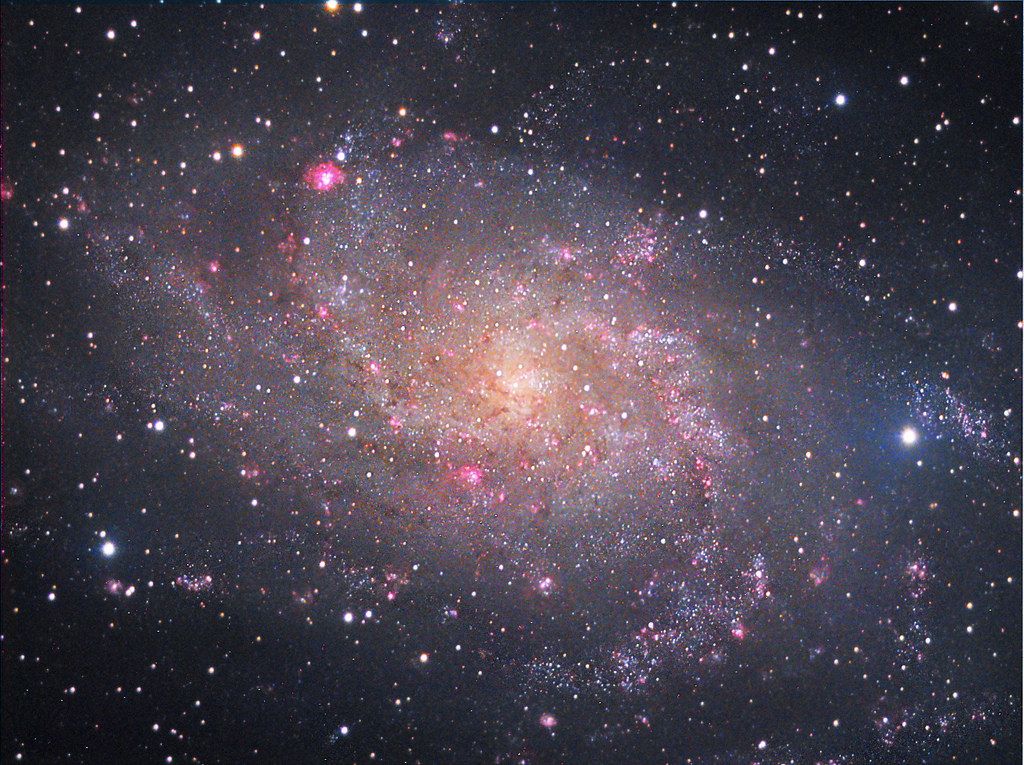The Big Bang Theory posits that at one time all matter in the universe was compressed into a single mass of near-infinite density. About 13.7 billion years ago this “singularity” suddenly expanded at the speed of light (or perhaps faster) into everything that we now see, starting as an intensely hot cloud of superheated matter called plasma that condensed into atoms, molecules, stars, planets and galaxies as it spread and cooled.
Is it Universally Accepted?
The short answer is “just about.” No scientific theory is accepted by absolutely everyone, even those that are well established through evidence, but astrophysicists are virtually unanimous in supporting some variation of the Big Bang Theory as what spawned the observable universe in its present state.
When the question becomes which version of the theory is accepted and what its implications are for broader issues like what came before, consensus starts to break down. There are a number of different takes on the concept, and a few scientists have begun to reject key elements of it entirely. Nonetheless, it is accepted as fact that all matter originated at a single dense point from which the universe expanded into creation billions of years ago.
Why is it So Widely Accepted?
Simply put, the Big Bang Theory is the best model to explain the observations and measurements of the universe we currently have. More than that, the math and science behind the Big Bang has predicted phenomena that were not capable of being observed at the time they were hypothesized, but now have been demonstrated to exist. Such evidence includes the way subatomic particles act under Big Bang-like conditions, like those simulated in particle colliders, and the presence of uniform background radiation throughout the universe, which is explainable by the Big Bang but nothing else thus far.
Does it Have Flaws?
Despite being the best cosmological model, the Big Bang Theory is problematic. Two of the main sticking points for scientists are referred to as the Horizon Problem and the Flatness Problem. The Horizon Problem stems from the uniformity of background radiation mentioned earlier. Radioactive particles are so uniform that it defies what we know about the laws of physics there is no way particles separated by those distances should behave so similarly. The Flatness Problem is in that vein, with the overall curvature of space-time being so small that it was unlikely for such flatness to have been a natural result of the Big Bang as previously understood. These challenges are confronted by the Inflationary Theory, which says that physical law was different in the first seconds after the Big Bang, as the universe expanded faster than light (which did not yet exist).
What Are the Alternatives?
Back in the 1930s, the main competition of the BBT was the Steady State Universe model, which claimed that new matter was somehow spontaneously being created at a regular rate, maintaining an equilibrium throughout a fixed and ever-existing universe (as opposed to an expanding one). Though that theory has long been dismissed, new concepts of how the universe might have come about are being developed, though compared to the Big Bang they are harder to understand, involving new dimensions, “membranes” of existence colliding with each other and thoughts about the texture of space-time that even top physicists have difficulty comprehending.
For now, however, the Big Bang is still the theory that supports all mainstream models of the observable universe and how it began.
Byline
Gavin Pritchard writes on science, technology & gadgetry. Owners of the iPhone should seriously consider viewing the wet iphone protection cases offered from kensington.com.
Image credit goes to evansg.





